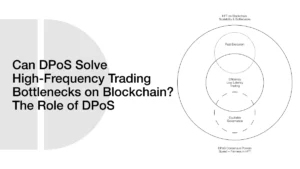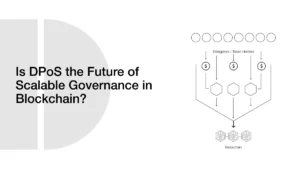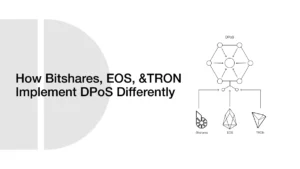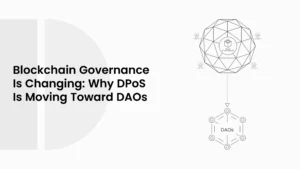From Points to Power: The Impact of Gamified Voting Incentives on DPoS Participation Rates
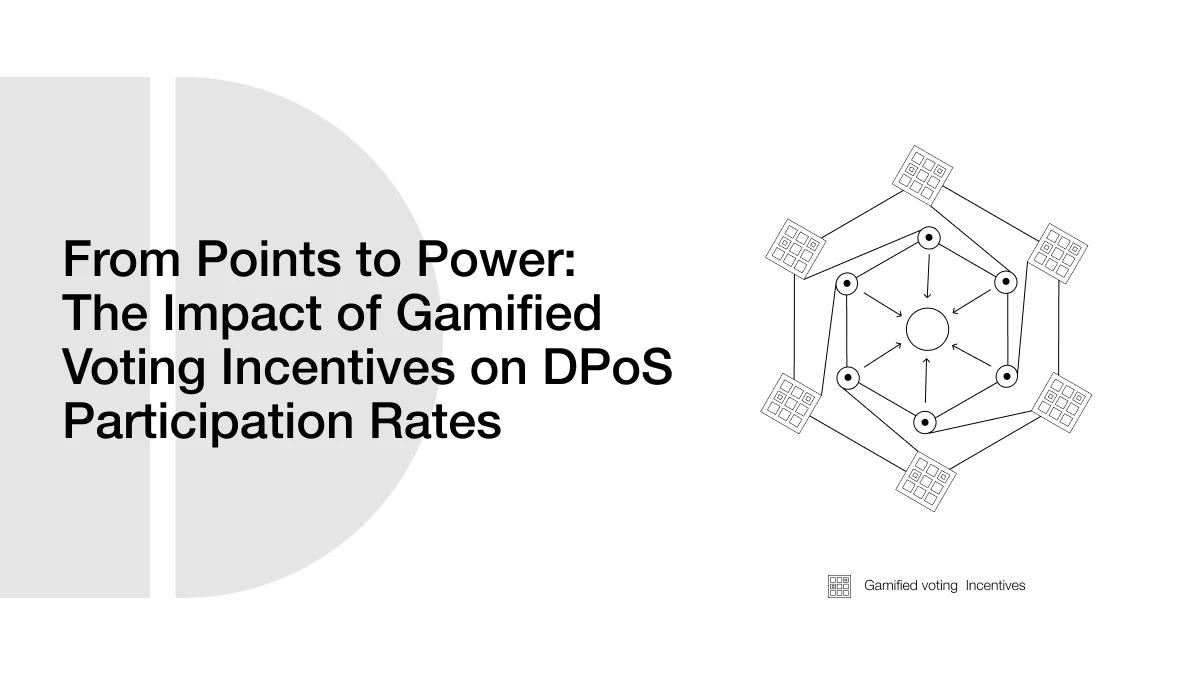
In recent years, two significant trends have been shaping the digital world: blockchain governance and gamification. At first, these two ideas might sound far apart. Blockchain governance is about how decisions are made on a blockchain network, often involving complex voting systems. Gamification is about making things more fun and engaging by adding game-like features such as points, rewards, and challenges. But when you put these two together, something interesting happens: blockchain voting can suddenly feel less like a boring technical process and more like a game people want to play. This approach is especially promising for Delegated Proof of Stake (DPoS) networks, where voting is a critical part of how the system runs.
- Understanding DPoS Voting Systems
- What Makes DPoS Different from Other Consensus Methods
- Why Participation Rates Matter in DPoS
- How Participation Rates Affect DPoS Governance
- What is Gamified Voting in Blockchain?
- The Concept of Gamified Voting Incentives
- How Blockchain Projects are Testing Gamification
- Examples of Gamified Incentives for DPoS Voting
- Why Gamification Can Boost DPoS Participation
- Human Motivation and Game Design
- The Role of Prosumers, Collective Intelligence, and Networks
- Why Gamification Works in DPoS Voting
- Types of Participants Gamification Attracts
- Policy-Entrepreneurs in DPoS Voting
- Citizen-Lobbyists in Blockchain Networks
- Citizen-Activists in Decentralized Governance
- Examples of Gamified Incentives That Could Work in DPoS
- On-Chain Rewards
- Social Recognition
- Challenge-Based Participation
- Potential Gamified Voting Models for DPoS
- Benefits of Gamified Voting in DPoS
- Higher Voter Turnout
- Stronger Community Bonds
- More Diverse Governance Participation
- Risks and Challenges of Gamifying DPoS Voting
- Elite Capture Risk
- Incentive Fatigue
- Perception Issues
- Risks vs Solutions in Gamified DPoS Voting
- Measuring the Impact of Gamification on DPoS
- Metrics to Track
- Case Study Approach
- Example Metrics for Measuring Gamified DPoS Impact
- Future Outlook for Gamified DPoS Participation
- Integration with Web3 Tools
- AI-Driven Personalization
- Potential for Cross-Chain Gamification
- Conclusion
- Frequently Asked Questions (FAQs)
- Glossary of Key Terms
In DPoS blockchains, voters elect delegates (commonly referred to as validators or witnesses) who are responsible for verifying transactions and securing the network. The greater the number of people who vote, the more powerful and decentralized the network is. The issue is that voter turnout in most DPoS systems is low. Individuals forget to vote, fail to see the relevance of voting, or do not think that their vote will count. Enter gamified voting incentives. The voting process can be made more exciting by the use of rewards, badges, streaks, and leaderboards by blockchain projects. The users might feel that they are attaining accomplishments, competing with others, or unlocking rewards for their community rather than just checking a box to vote. By doing this, passive token holders would become active and engaged members.
Understanding DPoS Voting Systems
What Makes DPoS Different from Other Consensus Methods
To understand why gamified voting incentives are important, it’s essential to first examine the mechanics of Delegated Proof of Stake (DPoS). A consensus mechanism in blockchain is the rule by which a network agrees on what transactions are valid. The most common and the oldest two are Proof of Work (PoW) and Proof of Stake (PoS).
- Bitcoin uses Proof of Work (PoW). Miners use complex math problems to append blocks to the blockchain. This is safe; however, it consumes much electricity and may be slow.
- Proof of Stake (PoS) allows individuals to stake their coins to verify transactions. The higher the number of coins you bet, the better your opportunity to be selected to validate blocks.
- Delegated Proof of Stake (DPoS) is an advancement of PoS. Rather than each person attempting to validate blocks, a few delegates (also known as witnesses or validators) are elected by the voters to perform the task. These agents maintain the network.
DPoS is fast, energy-efficient, and community-driven. But it has one key challenge: it only works well when people actually vote for their delegates.
ALSO READ: Can Delegated Proof of Stake (DPoS) Transform National Voting Systems Worldwide?
Why Participation Rates Matter in DPoS
A DPoS system may be the most technologically advanced in the world, but when only a few people vote, the system is weakened. Low participation entails:
- The network may be less democratic since the same small group of delegates may remain in power for an extended period.
- Voting may become less fair as big token holders may dominate.
- There is a possibility of community trust declining when the majority of the population feels that they have no voice.
As an example, less than 20 percent of token holders vote in delegate elections in some DPoS blockchains. This forms a scenario whereby only a few wallets determine who operates the network.
Higher voter participation brings three main benefits:
- Stronger decentralization: more voters means power is spread out.
- Better governance: delegates are more accountable if many people vote.
- Community engagement: active voters are more likely to stay involved in other network decisions.
How Participation Rates Affect DPoS Governance
| Participation Rate | Network Effect | Risk Level | Example Outcome |
| High (60%+) | Power spread widely, fair delegate rotation | Low risk | Community trust increases |
| Medium (30–59%) | Some concentration of power | Medium risk | Delegates may get re-elected too easily |
| Low (<30%) | Few voters control the network | High risk | Possible centralization |
What is Gamified Voting in Blockchain?
The Concept of Gamified Voting Incentives
Gamified voting refers to the inclusion of game-like features in the voting process so as to make it more enjoyable and rewarding. The system does not simply ask people to vote and leave, but rewards them with points, badges, rankings, or even prizes for participating.
In Delegated Proof of Stake (DPoS), this may translate into the rewarding of token holders whenever they cast a vote to delegate or whenever they contribute to a governance proposal or maintain a regular vote streak.
Gamification has already demonstrated that it can be used to boost civic engagement in public governance. A 2017 study by Gianluca Sgueo into gamified democracy concluded that points, rankings, and challenges could be used to attract those who would not otherwise participate in the decision-making process (Sgueo, 2017). Provided that these techniques can be applicable in city planning, public budgeting, and even national statistics campaigns, then these techniques can also be applicable in blockchain voting.
The main idea is simple: when voting feels like a challenge or a game, more people want to do it.
How Blockchain Projects are Testing Gamification
Some blockchain projects have started experimenting with gamified features to boost DPoS participation. The goal is to make voting less of a “duty” and more of an enjoyable, even competitive, experience.
For example:
- Leaderboards can rank voters by how often they vote or how early they participate.
- Voting streak bonuses can give extra rewards to people who vote regularly without skipping elections.
- NFT badges can mark milestones, such as “Voted in 10 Consecutive Proposals” or “Top 5% Voter.”
- Lottery-style rewards can give voters a random chance to win a prize simply for showing up to vote.
These ideas are not just theory. In other areas of blockchain, gamification is already used to keep people active. Play-to-earn games reward players with tokens for completing in-game tasks. NFT platforms give collectors badges for reaching certain milestones. The same psychology can work in blockchain voting.
Examples of Gamified Incentives for DPoS Voting
| Incentive Type | How It Works | Expected Effect on Participation |
| Voting Streak Bonus | Extra rewards for voting in consecutive rounds | Builds a voting habit |
| Leaderboards | Public ranking of top voters | Creates friendly competition |
| NFT Achievement Badges | Unique digital collectibles for reaching milestones | Encourages long-term engagement |
| Prize Draws | Random reward for participating | Attracts casual or first-time voters |
Why Gamification Can Boost DPoS Participation
Human Motivation and Game Design
Gamification works because it taps into human psychology. People are motivated in two main ways:
- Intrinsic motivation: doing something because it feels good or meaningful.
- Extrinsic motivation: doing something to get a reward, recognition, or benefit.
When voting in a DPoS system is just a technical task, many people skip it. But if the same action comes with fun, visible rewards, they are more likely to take part.
Research explains three ways gamification motivates people (Hamari & Koivisto, 2015) :
- Utilitarian benefits: making it easier to reach a goal (like earning tokens while voting).
- Hedonistic benefits: making the process enjoyable (colorful dashboards, animated badges).
- Social benefits: connecting people through friendly competition and recognition.
As an example, a user in a blockchain voting app may log in simply to maintain their voting streak or to ascend the leaderboard. A feeling of status and advancement can be quite effective even in cases where the short-term reward is low.
ALSO READ: Quantum-Resistant DPoS: How to Future-Proof Blockchain for the Quantum Era
The Role of Prosumers, Collective Intelligence, and Networks
Gamified voting doesn’t just get more people to show up; it can also improve the quality of decision-making in a DPoS network. This happens through three important ideas:
- Prosumerism: In gamified voting, users are not just passive voters. They help create the governance process by shaping proposals and then consuming the results. This makes them more invested in the system.
- Collective Intelligence: When more people take part, the community benefits from a larger pool of knowledge and opinions. As James Surowiecki’s “Wisdom of the Crowd” theory shows, large, diverse groups often make better decisions than a small group of experts.
- Network Theory: Gamification strengthens community connections. People who interact regularly in challenges, forums, and leaderboards form stronger bonds, which can make them more committed to the network.
When all three work together, gamified voting can create a more active, informed, and loyal voter base in DPoS systems.
Why Gamification Works in DPoS Voting
| Concept | How It Helps Participation | Example in DPoS Voting |
| Prosumerism | Voters help design and consume governance | Community proposal contests |
| Collective Intelligence | Diverse input leads to better decisions | More voters giving feedback on proposals |
| Network Theory | Stronger community bonds increase engagement | Social leaderboards and group voting challenges |
Types of Participants Gamification Attracts
All voters in a DPoS system are not equal. It can attract people of various types in different ways when gamification is implemented. Knowledge of these kinds of participants can assist blockchain projects in creating the appropriate form of incentives.
Policy-Entrepreneurs in DPoS Voting
Policy-entrepreneurs are well-informed and well-trained voters. They are aware of the network, how proposals are put forward, and usually, they have a vested interest in the governance.
Policy-entrepreneurs in a DPoS system can be developers, large token holders, or long-term members of the community. Gamification attracts them by giving prestige-based rewards such as:
- Special badges for proposal creation
- Exclusive access to governance discussions
- Public recognition on leaderboards
These users value influence and status, so incentives that highlight their expertise are the most effective.
Citizen-Lobbyists in Blockchain Networks
Citizen-lobbyists are voters who join in to protect their own interests or support causes that benefit them. In a DPoS network, this might be a token holder who votes for a proposal that will raise the value of their holdings, or a community member who wants a specific feature funded.
Gamification appeals to them through direct benefits, such as:
- Token rewards for active voting
- Voting bonuses linked to proposal outcomes
- Achievement points that can be redeemed for utility
Measurable gains drive citizen-lobbyists, so they respond best to rewards they can clearly use or convert into value.
Citizen-Activists in Decentralized Governance
Citizen-activists are value-driven voters. They participate not for personal gain but because they believe in the mission or ethics of the network. They are motivated by community impact, transparency, and social causes.
Gamification attracts them with impact-based recognition, such as:
- Public dashboards showing the results of their voting activity
- “Impact score” badges for supporting community-beneficial proposals
- Group challenges that fund social or environmental initiatives within the network
Citizen-activists value feeling part of something bigger, so incentives should show how their actions contribute to the network’s overall health.
| Participant Type | Motivation | Example Incentive | Why It Works |
| Policy-Entrepreneur | Influence & expertise | Proposal creation badges | Recognizes skill and leadership |
| Citizen-Lobbyist | Direct personal benefit | Token rewards | Gives tangible returns |
| Citizen-Activist | Social values | Impact scoreboards | Connects actions to community goals |
Examples of Gamified Incentives That Could Work in DPoS
Gamification in DPoS voting can take many forms. The goal is to make the voting process feel interactive, rewarding, and habit-forming. Here are some examples of incentives that could be built directly into blockchain voting platforms.
On-Chain Rewards
Rewarding voters with on-chain assets is one of the most straightforward methods of stimulating participation. They may be tokens, NFTs, or governance points with real value in the network.
For example:
- A voter is rewarded with 0.1 governance token per valid vote.
- Voters who vote in 10, 25, or 50 consecutive voting rounds are minted special NFTs.
- Governance tokens can be used to get discounts on fees or access to premium features within the ecosystem.
Because these rewards are stored on-chain, they are fully transparent and verifiable.
Social Recognition
Some voters are more motivated by status and recognition than by direct rewards. Social gamification can give them a reason to keep voting by making their activity visible to the community.
Ideas include:
- Leaderboards that show the top voters each month.
- “Top Voter” titles are displayed on user profiles.
- Public shoutouts on official community channels.
This taps into the natural human desire to be seen and appreciated for contributions.
Challenge-Based Participation
Challenges create a sense of urgency and achievement. They can be time-limited events or ongoing missions that encourage voters to keep coming back.
Possible challenges:
- Voting Streak Challenge: vote in all elections for a month to earn a bonus NFT.
- The Proposal Marathon: participate in every proposal during a 90-day period to unlock a rare governance badge.
- Random Prize Draw: every voter in a given round is entered into a lottery for a special prize.
Challenges add variety, keeping the voting process fresh and exciting.
Potential Gamified Voting Models for DPoS
| Gamified Model | Description | Possible Impact on Turnout | Example Reward |
| Voting Streak Bonus | Rewards for consecutive voting | Builds habit and loyalty | Governance token bonus |
| Seasonal Leaderboard | Ranks voters by activity each season | Encourages competition | Title & profile badge |
| Random Prize Draw | Lottery for active voters | Attracts casual participants | Rare NFT or token drop |
| Impact Scoreboard | Tracks the effect of votes on proposals | Appeals to social values | “Community Builder” badge |
These incentive models can also be combined. For example, a DPoS network could run a seasonal leaderboard that also gives streak bonuses and random prize draws for participants. By mixing different styles of rewards, the network can appeal to policy-entrepreneurs, citizen-lobbyists, and citizen-activists all at once.
Benefits of Gamified Voting in DPoS
When done well, gamification can completely change how people see and experience voting in a DPoS system. Instead of being just another technical step, it becomes something that feels rewarding, social, and worth repeating. Here are the main benefits.
Higher Voter Turnout
The biggest benefit is simple: more people vote. In many DPoS networks today, only a small percentage of token holders take part in elections or governance proposals.
By adding rewards, streaks, leaderboards, and other game-like features, networks can give people a reason to log in and participate regularly. Even a small increase in turnout can make the system more democratic and reduce the risk of centralization.
For example, if a network with a 20% turnout adds gamification and turnout rises to 40%, that means twice as many voices are now shaping governance decisions.
Stronger Community Bonds
Gamification often includes social elements like team challenges, group rewards, or public recognition. These features help people feel more connected to the network and to other voters.
When voters see their names on leaderboards, interact in challenge discussions, or share their achievements, they start building a sense of community. A connected community is more likely to stay active, support good proposals, and protect the network from harmful changes.
More Diverse Governance Participation
Without gamification, voting is often dominated by a small group of highly invested token holders. This can create a narrow decision-making base.
Gamified incentives help attract:
- Smaller token holders who may otherwise skip voting.
- Casual users who aren’t deeply involved but enjoy earning rewards.
- Newcomers who might be intimidated by traditional governance.
This diversity means proposals are decided with a broader range of perspectives, making the system more balanced and resilient.
| Benefit | Why It Matters | Example in Practice |
| Higher Voter Turnout | Increases decentralization and fairness | Turnout rises from 20% to 40% |
| Stronger Community Bonds | Builds loyalty and shared identity | Group challenges & leaderboards |
| More Diverse Participation | Brings in new and smaller voters | Rewards for first-time voters |
Risks and Challenges of Gamifying DPoS Voting
Gamification can bring big benefits to DPoS governance, but it’s not without its risks. If it’s poorly designed, it can create problems that damage trust or even reduce participation. Understanding these risks and how to manage them is key to making gamified voting work.
Elite Capture Risk
One of the biggest dangers is elite capture. This happens when large token holders or well-connected delegates take most of the rewards. If the reward system only favors high-volume voters or those with big stakes, the same people could keep winning, while smaller voters get pushed out.
This could lead to a feeling that the system is rigged, which might discourage participation from everyday community members.
Incentive Fatigue
Another challenge is incentive fatigue. Over time, the same rewards can lose their appeal. For example, if voters always get the same badge for participating, it will eventually feel boring. This can cause turnout to drop again after an initial boost.
Keeping incentives fresh and rotating challenges regularly can help avoid this problem.
Perception Issues
Gamification can sometimes be seen as manipulation rather than engagement. If users feel like rewards are being used to push them toward certain voting outcomes, they may lose trust in the governance process.
Transparency is essential here. Voters should always be able to see how rewards are earned and be sure that the system is fair.
Risks vs Solutions in Gamified DPoS Voting
| Risk | Why It Happens | Possible Solution |
| Elite Capture | Big holders dominate rewards | Limit max rewards per wallet, reward unique voters |
| Incentive Fatigue | Repeating the same rewards | Rotate incentive types and difficulty levels |
| Perception Problems | Users think it’s manipulation | Open-source gamification code and clear rules |
Measuring the Impact of Gamification on DPoS
If a DPoS network adds gamified incentives, it needs to know whether those changes are working. Measuring the impact is the only way to see if voter participation is increasing, if the community is happier, and if governance quality is improving.
Metrics to Track
Several key metrics can show whether gamification is making a difference:
- Voter Turnout Rate: Compare the percentage of eligible voters before and after adding gamification.
- Voting Consistency: Track how many voters participate in multiple rounds over time.
- New Voter Engagement: Track the number of first-time voters who join after the launch of gamification features.
- Proposal Participation Rate: Measure how many proposals each voter engages with.
- Reward Redemption Rate: See how many people actually claim or use their rewards.
If all or most of these numbers go up, it’s a sign the gamified system is doing its job.
Case Study Approach
Studying real-world examples from other areas can help blockchain projects refine their gamification.
For example, Decide Madrid, a public governance platform in Spain, saw more residents join in local decision-making after adding elements like proposal rankings and public recognition for contributors. Similarly, Manor Labs in Texas used a points system called “Innobucks” to reward citizens for submitting and voting on ideas. Participation rates improved because people enjoyed seeing their progress and earning rewards they could use locally (Sgueo, 2017).
By applying similar tracking in DPoS systems, developers can compare turnout and engagement before and after gamification, making it easier to fine-tune rewards.
Example Metrics for Measuring Gamified DPoS Impact
| Metric | What It Measures | Why It Matters |
| Voter Turnout Rate | Percentage of token holders voting | Shows participation growth |
| Voting Consistency | Frequency of repeat voters | Indicates habit formation |
| New Voter Engagement | First-time voters after gamification | Measures ability to attract newcomers |
| Proposal Participation Rate | Number of proposals voted on | Shows depth of engagement |
| Reward Redemption Rate | Number of rewards claimed | Tests the effectiveness of incentives |
Future Outlook for Gamified DPoS Participation
Gamified voting in DPoS is still a new idea, but it has strong potential to grow as blockchain technology and user expectations evolve. Over the next few years, we’re likely to see more creative and advanced ways of making governance interactive, rewarding, and accessible.
Integration with Web3 Tools
As more blockchain users interact through Web3 wallets and apps, voting systems can connect directly to these tools. This means voters could get pop-up reminders when a new proposal is live, see their voting streak in real time, and claim rewards instantly.
For example, a Web3 governance app could:
- Show voters their ranking on the leaderboard right inside the wallet.
- Offer a “one-click vote and claim” button for faster participation.
- Integrate rewards with DeFi platforms, letting voters stake their earned tokens immediately.
AI-Driven Personalization
Artificial intelligence could make gamification more personal and effective. Instead of giving the same rewards to everyone, AI could track a voter’s behavior and offer challenges that fit their activity level.
For example:
- A casual voter might get a small “first step” challenge to vote twice in one week.
- An active voter might get a harder challenge, like voting in every proposal for a month to unlock a rare NFT.
This personalized approach could help keep both beginners and experts engaged.
Potential for Cross-Chain Gamification
Right now, gamification usually happens inside a single blockchain network. In the future, rewards could work across multiple DPoS systems.
Imagine voting in one network and earning a badge that’s recognized in another. Or earn governance tokens that you can use in partner ecosystems. This cross-chain reward system could:
- Attract users who already vote in other blockchains.
- Create a larger, more interconnected governance community.
- Make voting incentives more valuable by expanding their use.
| Trend | Description | Potential Benefit |
| Web3 Integration | Voting tools inside wallets and dApps | Easier participation and instant rewards |
| AI Personalization | Tailored challenges and rewards | Keeps all user types engaged |
| Cross-Chain Rewards | Incentives usable across networks | Expands participation pool |
Conclusion
Delegated Proof of Stake (DPoS) systems are built on the idea of community choice. But for that idea to work, people need to show up and vote. The reality is that voter turnout in many DPoS networks is still low, and that’s where gamification can make a real difference. By adding points, badges, leaderboards, streak bonuses, and creative challenges, blockchain projects can turn governance from a routine task into an engaging experience. Gamification taps into human motivation, whether it’s the drive for rewards, the satisfaction of recognition, or the feeling of belonging to something bigger.
We’ve seen from public governance experiments like Decide Madrid and Manor Labs that game-like incentives can attract more participants, keep them coming back, and improve the quality of decision-making. The same approach can work in DPoS, especially when rewards are designed to be inclusive, transparent, and adaptable over time. Of course, gamification isn’t perfect. Risks like elite capture, incentive fatigue, and trust issues must be addressed through careful design. But if done right, it can strengthen decentralization, diversify participation, and make governance more resilient.
The future is promising. With Web3 integration, AI-driven personalization, and even cross-chain incentives, gamified DPoS voting could become a standard feature of blockchain governance. In this future, voting won’t feel like a chore; it will feel like a game worth playing, and every vote will help shape the network’s success.
Frequently Asked Questions (FAQs)
Q1: What is gamified voting in DPoS?
Gamified voting in DPoS means adding game-like features, such as rewards, badges, and leaderboards, to encourage token holders to participate in delegate elections and governance proposals.
Q2: Why is voter turnout important in DPoS?
High voter turnout ensures that decision-making power is more decentralized and representative of the community, making the network more secure and fair.
Q3: What kinds of incentives can be used in DPoS voting?
Incentives can include token rewards, NFT badges, public recognition on leaderboards, voting streak bonuses, and random prize draws for active participants.
Q4: What are the risks of gamifying blockchain governance?
Risks include elite capture (big holders winning most rewards), incentive fatigue (rewards becoming boring), and perception issues if voters feel manipulated.
Q5: How can blockchain projects measure the impact of gamification?
They can track metrics like voter turnout rate, voting consistency, new voter sign-ups, proposal participation rate, and the number of rewards claimed.
Glossary of Key Terms
- Delegated Proof of Stake (DPoS) – A blockchain consensus method where token holders vote for delegates who validate transactions and maintain the network.
- Gamification – Adding game-like elements such as points, badges, or leaderboards to make an activity more engaging.
- Policy-Entrepreneur – An experienced user who actively shapes governance through proposals and strategic voting.
- Citizen-Lobbyist – A participant who votes to protect their own interests or gain specific benefits.
- Citizen-Activist – A voter driven by values, ethics, or community goals rather than personal gain.
- Prosumerism – When users are both producers and consumers of governance decisions.
- Collective Intelligence – The idea that large, diverse groups can make better decisions than small expert groups.
- Elite Capture – When a small, powerful group controls most of the decision-making power or rewards in a system.
- Incentive Fatigue – When rewards lose their appeal because they are repetitive or predictable.

